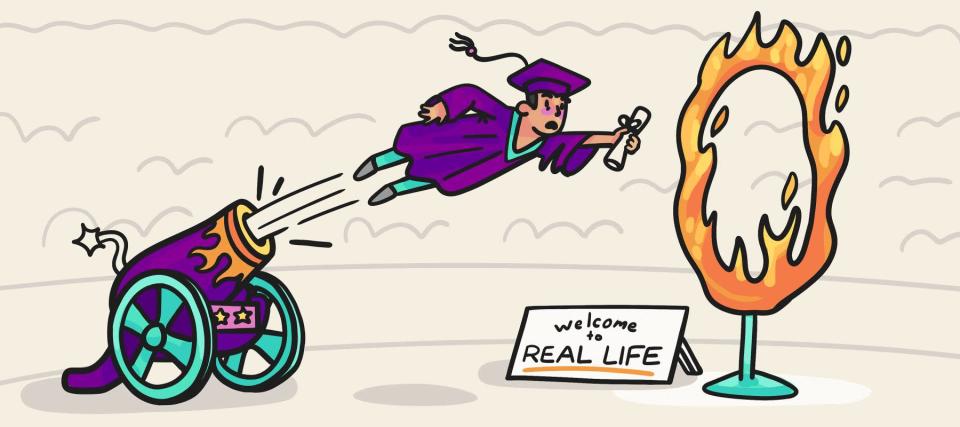
Some college students have enough financial help to focus on schoolwork and forging new friendships. Others are stressed about money all the time.
But regardless of your current means, financial literacy is an essential life skill for all young adults.
Some of the decisions you’re making now will affect the race you’ll be running for years to come — especially if ຫນີ້ເງິນກູ້ນັກສຶກສາ is putting you 10 feet behind the starting line.
In the end, time is the only resource you can’t recover, and you can’t always make up for missed opportunities later. Here’s how to get up to speed.
ຢ່າພາດ
What is financial literacy?
Financial literacy refers to a basic understanding of essential financial topics and skills. You don’t need to learn how to run a business; it’s about personal finance, the kind that grows and shrinks your own bank account.
Concepts that fall under the financial literacy umbrella include saving, learning how to build credit, investing, paying off debt, ການວາງແຜນ ບຳ ນານ ແລະອື່ນໆອີກ.
Keep in mind, financial literacy doesn’t just consist of knowing all the definitions. It’s also applying that knowledge in the real world through smart money management.
Once you have the tools, your long-term financial success won’t be based on hopes, dreams and guesswork. You’ll know what you need to do to achieve your financial goals.
Why is financial literacy important for students?
At first, financial literacy might seem like a game for older people — individuals who are far along in their careers and have more disposable income than the average college student.
In truth, financial literacy is especially relevant to college students precisely because of their youth and limited funds.
Many students are living on their own for the first time but don’t have cash to burn on simple mistakes. That turns budgeting and financial planning into urgent priorities.
A quarter of college students have experienced food insecurity, and 17% have experienced housing insecurity, a recent survey revealed.
And it’s not like graduation brings immediate relief. Average student debt upon leaving school has skyrocketed to $37,113 — that’s up 317% ນັບຕັ້ງແຕ່ 1970, when adjusted for inflation.
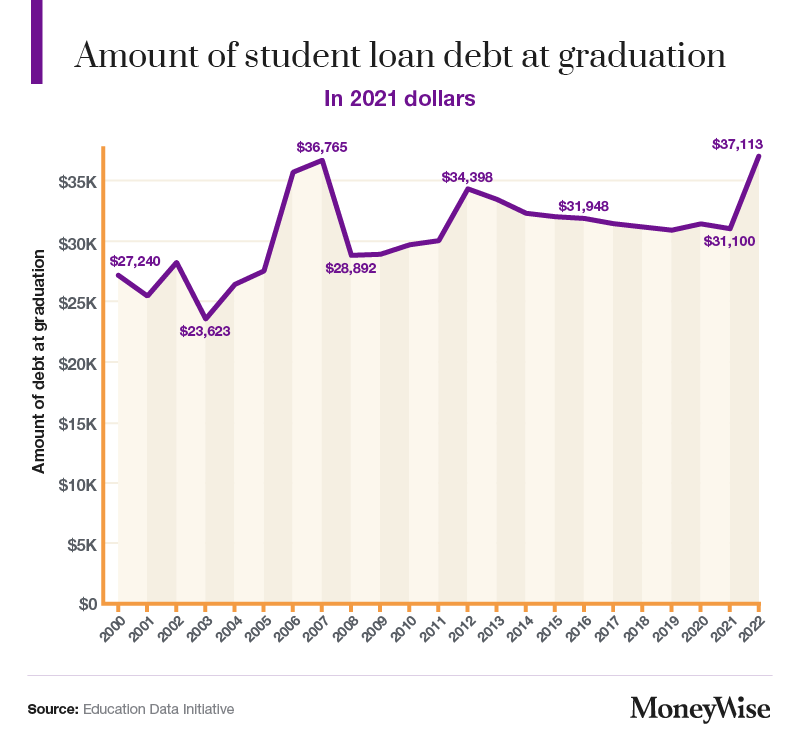
That looks like a lot of money for a recent grad — and it is — but you’ll be able to start mapping out a plan once you get an idea of your starting salary.
Right now, the average starting salary for all college graduates is ປະມານ $ 56,000 a year. Obviously, a lot depends on your field. You can get a better idea of your individual prospects by searching for the job you want on the government’s Bureau of Labor Statistics website.
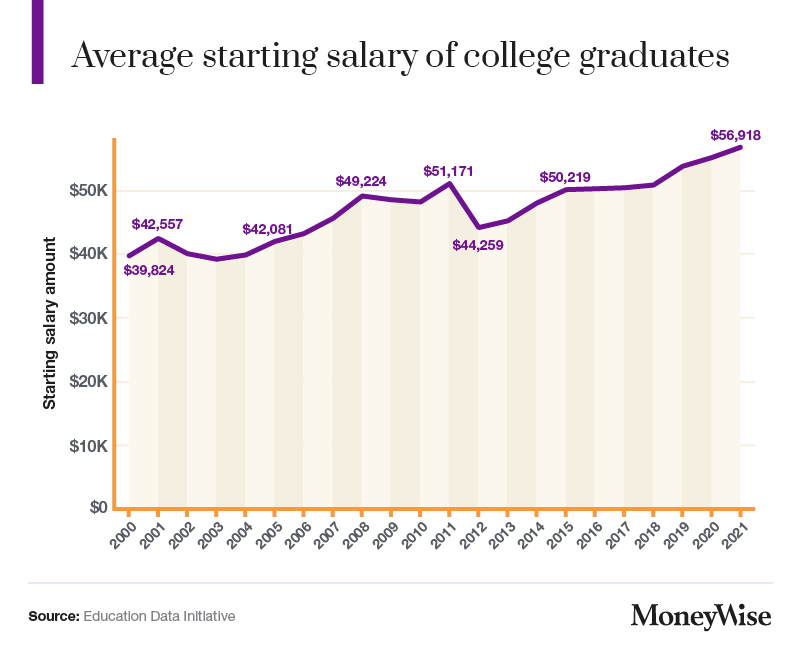
This will help you calculate your debt-to-income ratio, or DTI, which is a key budgeting and borrowing measurement.
To calculate your DTI, take your total monthly debt payments and divide the figure by your gross monthly income (how much money you earn each month before taxes and deductions are subtracted).
The DTI for the class of 2021 is around 54% — not as bad as the class of 2012 at 66%, but still a high DTI.
Lenders typically want to see this percentage much lower when it comes to approving loans, especially big ones like ການຈໍານອງ ແລະ ເງິນກູ້ຢືມລົດໃຫຍ່, because it signals a higher likelihood of repayment.
A DTI of less than 43% shows you can handle your debts and will make it easier to get a reasonable loan.
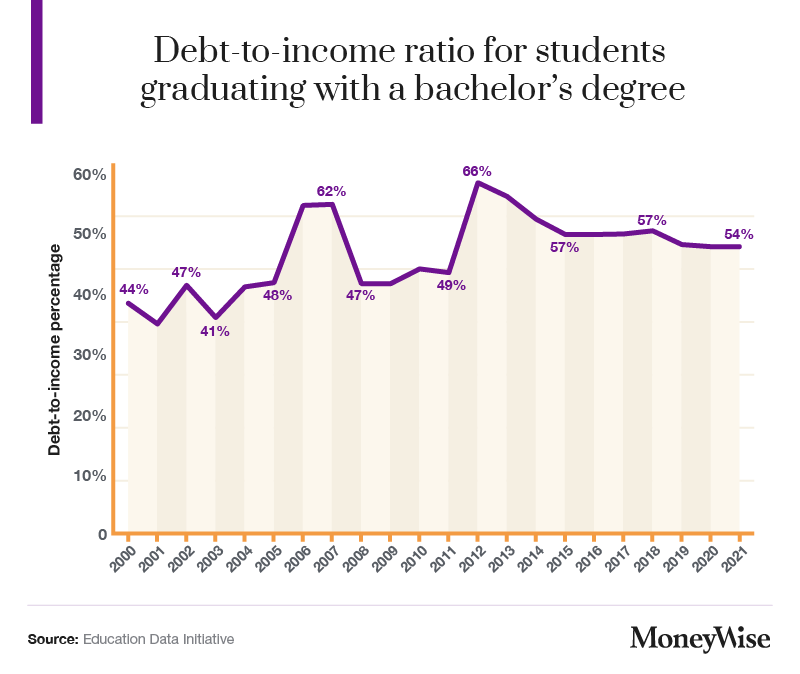
5 pillars of financial literacy
Financial literacy covers a wide range of topics, but they can be sorted into five key categories.
Here’s a quick look at each one, touching on some of the most important elements you’ll want to learn about:
ມີລາຍໄດ້
It’s not enough to know how much you make; you need to understand what happens to the money.
Say you apply for a summer job. Your employer will quote you a pre-tax salary, often through a written work contract. You’ll want to ເຮັດຄະນິດສາດ to determine what that number will look like after federal taxes as well as other deductions including states taxes and Social Security contributions.
This will give you an accurate expectation of your net or take-home pay so you can budget accordingly.
ໃຊ້
Some spending is essential: You need to eat, get around, pay for school and keep a roof over your head. Some spending is not.
Your job is to correctly identify which is which, and to stay on budget while minimizing your costs and maximizing the value you get back.
Start by tracking your spending, either manually or with an app that watches your bank account. You can only make a decision about whether $150 a month is too much to spend on takeout if you know you’re spending $150 a month.
Then, take the time to really research your options. A lot of similar products and services are sold for wildly different prices — including food, clothes and insurance — and you should only spend extra when it makes you happier.
Save and invest
Many college students treat this as a problem for “later,” but you’d be surprised how quickly “later” can arrive. Saving and investing are not voluntary but critical to long-term financial stability and achieving your life goals.
The main goal now is to make saving and investing a consistent habit as you grow your earnings over time. A recent ການສຶກສາ by Northwestern Mutual shows how different generations are doing at building up their personal and retirement savings — and Gen Z is holding its own — but you should strive to be ahead of the curve whenever possible.
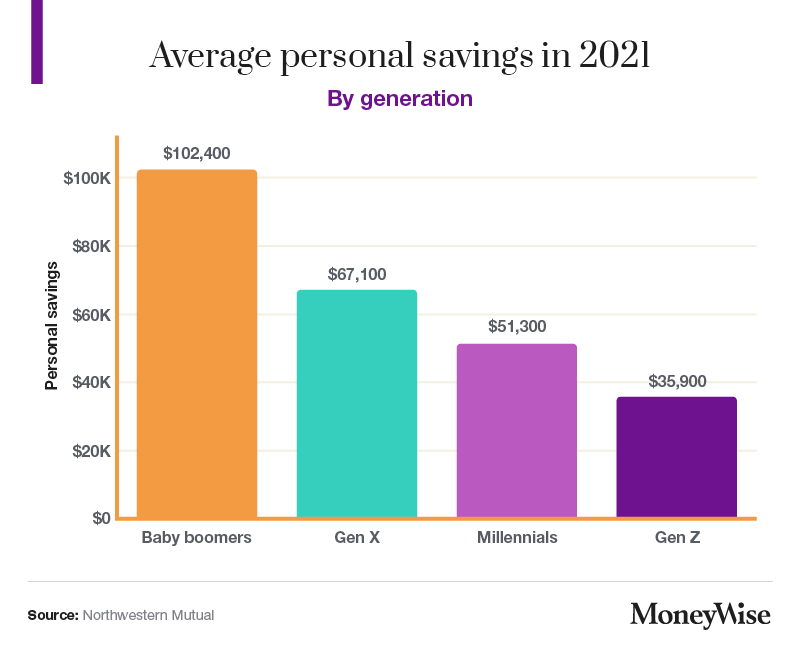
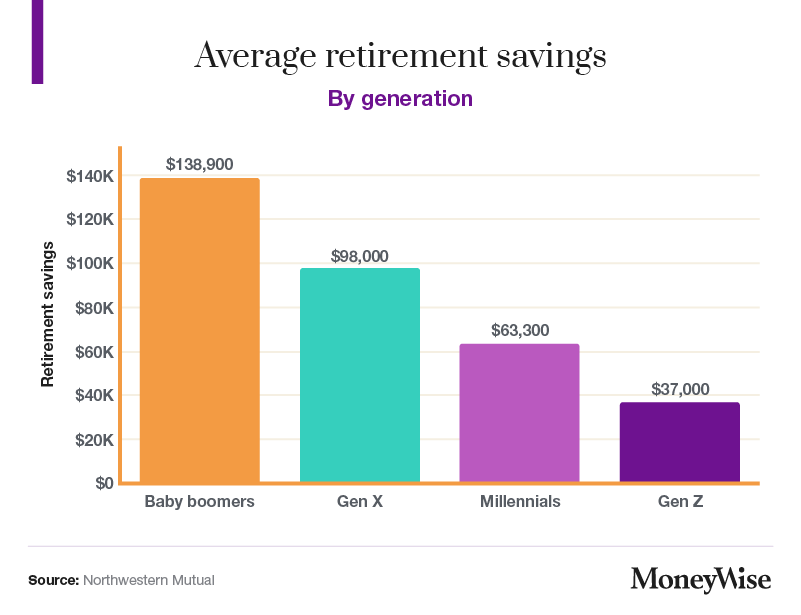
Plus, due to ການປະສົມ, the saving and investing you do now is worth a lot more than the saving and investing you’ll do later.
Compounding happens when the interest you make in a ບັນຊີເງິນຝາກປະຢັດ begins generating its own interest, or the earnings you make on your investments get reinvested and begin generating their own earnings.
This effect can ramp up quickly, even with a small amount of money. It’s starting early that’s the key.
Young people don’t own a very big slice of the stock market, data from the Federal Reserve shows, but don’t let that stop you from learning about different kinds of investments and putting any spare cash you have to work.

ໄດ້ຢືມ
Even if you’ve managed to pay for college without taking out huge student loans, you’ll likely borrow lots of money in lots of different ways throughout your life.
That includes mortgages for ຊື້ເຮືອນ, auto loans for financing a car and ບັດເຄຣດິດ for day-to-day purchases. Understanding how these loans work and what options are available will help you avoid major pitfalls.
Credit cards, for example, are convenient but far more expensive than other forms of borrowing. Some loans are ມີຄວາມປອດໄພ, which are cheaper but you must agree to surrender something of value if you stop paying. Some loans are closed, meaning you can’t simply pay them off quickly if you want to.
Take the time to determine the best kind of loan for your situation, then compare offers from different lenders. Pay close attention to the interest rate and how long you have to pay the loan back, and watch out for fees hidden in the fine print.
ປົກປັກຮັກສາ
Making money isn’t easy, so don’t lose it to a catastrophe you weren’t prepared for.
Protecting yourself starts with an ກອງທຶນສຸກເສີນ — a set amount of cash you leave aside in your bank account for unexpected financial needs. That way, when your laptop gets stolen, you don’t need to borrow money (and thus spend more) to pay for it.
The other big element is insurance. Car insurance, renter’s insurance and health insurance will all drain your finances, but you’ll be glad you have them when you need them.
The key is picking the right kind and amount of coverage — so you’re not overprotected and overspending, or underprotected and underspending — and comparing offers from several providers. Different companies use different formulas to determine their rates, so you can save a lot just by shopping around.
12 statistics on financial literacy
Don’t feel like a star student when it comes to financial literacy? The truth is that many Americans are lacking in this area, which can have a cascade of consequences for their financial well-being.
Take a look at these 12 statistics — and be inspired to do better than your classmates and neighbors.
ອາເມລິກາ rank 14th in financial literacy globally.
Nearly 58% of Americans failed a National Financial Literacy Test.
The average score on the National Financial Literacy Test among people aged 19 to 24 is 71% — barely a passing grade.
ພຽງແຕ່ 1 ໃນຜູ້ໃຫຍ່ 3 worldwide understand basic financial concepts.
32% ຂອງອາເມລິກາ feel they became more disciplined about their money management as a result of the Covid-19 pandemic.
ປະມານ 25% ຂອງຜູ້ບໍລິໂພກ estimate that personal finance missteps have cost them $30,000 or more in their lifetime.
60% ຂອງຜູ້ໃຫຍ່ສະຫະລັດ feel anxious thinking about personal finances, while 50% feel stressed discussing the topic.
Women are more likely to experience financial anxiety than men: 65% compared to 54%.
For Gen Z, financial literacy tends to be lowest among those who have never attended college.
ປະມານ 83% ຂອງຜູ້ໃຫຍ່ສະຫະລັດ say parents are the most responsible for teaching their kids about money. However, 31% don’t actually talk to their kids about finances.
ຫນ້ອຍກ່ວາເຄິ່ງຫນຶ່ງ of states require high schools to teach personal finance.
Financial literacy tends to be greatest among baby boomers and lowest among Gen Z.
5 places to go to improve your financial literacy
Unless you’re born rich, you won’t be able to reach financial security without working on your financial literacy.
Now, if you haven’t had any financial education until now — and that describes plenty of young people — you may not know where to turn.
There isn’t one right answer, so here are just a few of your options to get the financial knowledge you need.
Take finance courses at college
You’re a student, so make the most of this time. If your college or university offers financial literacy courses, seize the opportunity to learn in a structured setting and maybe earn a couple credits.
If personal finance courses aren’t available, even something as broad as economics can prove useful in learning about topics such as inflation, stock market crashes and housing bubbles — all things that can have a very real impact on your life now and in the future.
Leverage government and nonprofit resources
While education is primarily a state and local responsibility, there are some federal resources available to all Americans.
The U.S. government has set up various platforms to help people learn about personal finance and get specific questions answered. MyMoney.gov, run by the U.S. Treasury’s Financial Literacy and Education Commission, is a great starting point.
Other agencies include the Consumer Financial Protection Bureau, ການ ຄະນະ ກຳ ມະການຫຼັກຊັບແລະຕະຫລາດຫລັກຊັບສະຫະລັດອາເມລິກາ ແລະ Internal Revenue Service.
Nonprofits are another option. For example, United Way sometimes offers free financial coaching.
Turn to financial institutions and experts
Banks and credit unions provide a wealth of financial information to customers and the general public. Check your bank’s website to see which services it has to help you, from article libraries to budgeting tools and calculators.
ທ່ານຍັງສາມາດ consult financial professionals, either through your bank or independently, to help with tasks like setting up investment accounts.
Keep in mind: Not all advice is free, and not all advice is unbiased, so ask a lot of questions and compare with other resources before accepting what you hear.
Consider less traditional resources
Not everybody has the time or patience to take a class or poke around on government sites. Sometimes you want information to reach you where you are.
While social media is a swamp of bad advice, you can find people who really know their stuff.
Just do your due diligence when consulting online sources, and always look at a person’s qualifications and background. Being on social media doesn’t mean someone is impartial, and having a lot of followers doesn’t mean they’re giving good advice.
Follow personal finance sites
MoneyWise isn’t your only option, of course, but we try to provide easy access to tools and resources to help you master essential money matters.
We’re not know-it-alls — in fact, we try hard not to become know-it-alls. We’re always curious and always learning, and we like to take our readers along for the ride as we discover new ways to get the most from your money.
If you’re looking for well-researched articles that won’t make your eyes glaze over, head over to MoneyWise or sign up for our ຈົດ ໝາຍ ຂ່າວທາງອີເມວ.
ສິ່ງທີ່ຈະອ່ານຕໍ່ໄປ
ບົດຄວາມນີ້ໃຫ້ຂໍ້ມູນເທົ່ານັ້ນແລະບໍ່ຄວນຕີຄວາມasາຍເປັນ ຄຳ ແນະ ນຳ. ມັນຖືກສະ ໜອງ ໃຫ້ໂດຍບໍ່ມີການຮັບປະກັນໃດ kind.
Source: https://finance.yahoo.com/news/dont-learn-money-hard-way-150000955.html